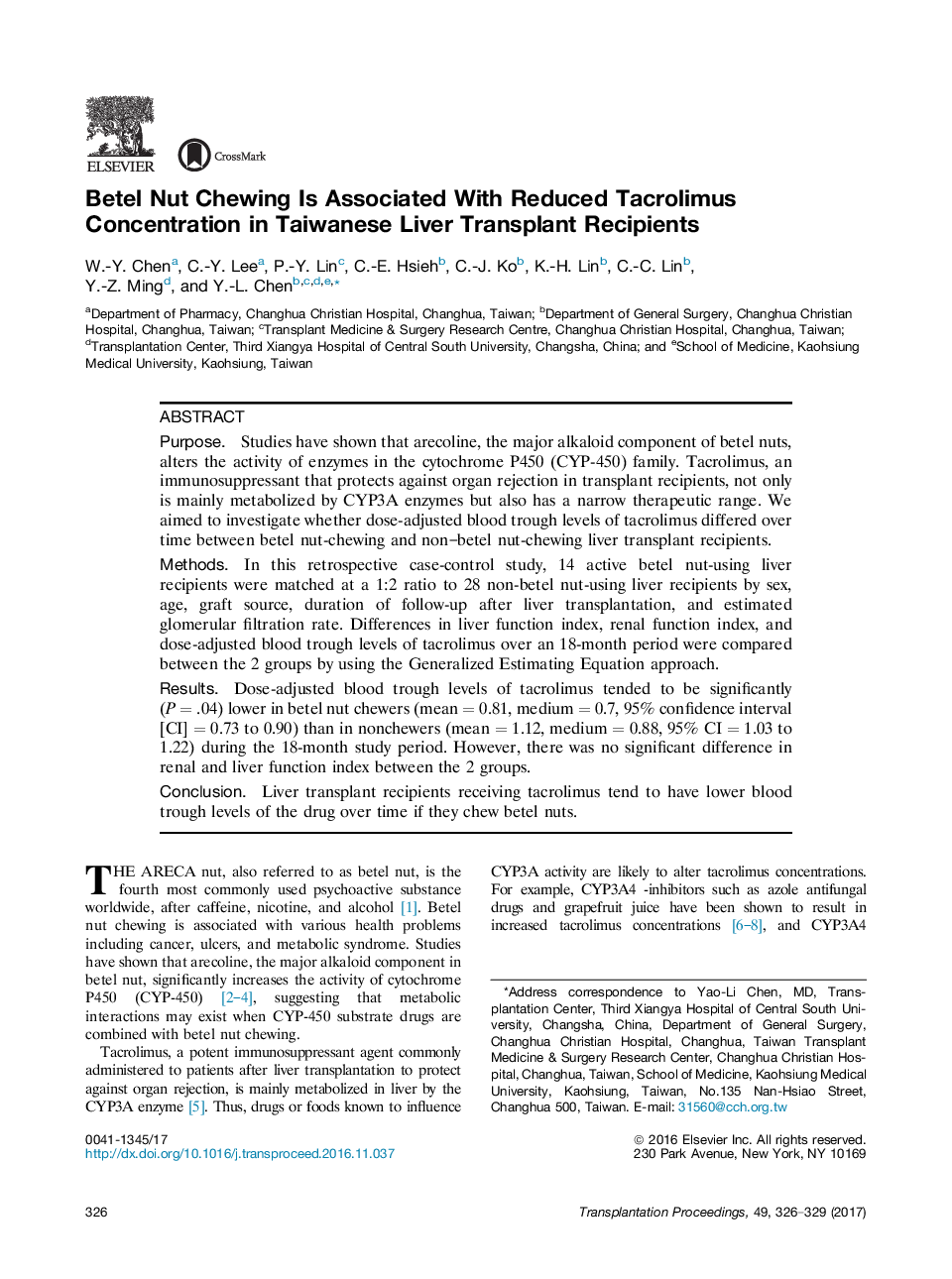| کد مقاله | کد نشریه | سال انتشار | مقاله انگلیسی | نسخه تمام متن |
|---|---|---|---|---|
| 5729257 | 1411678 | 2017 | 4 صفحه PDF | دانلود رایگان |
- We adjusted for differences in daily doses among patients by dividing individual tacrolimus level by the recipient's daily dose to arrive at dose-adjusted blood trough levels of tacrolimus.
- The adjusted tacrolimus levels in betel nut chewers tended to be lower than those in nonchewers over the 18-month study period.
- There were no significant differences in age, the duration of follow-up after liver transplantation, causes of liver disease before transplantation, renal function index, and liver function index.
PurposeStudies have shown that arecoline, the major alkaloid component of betel nuts, alters the activity of enzymes in the cytochrome P450 (CYP-450) family. Tacrolimus, an immunosuppressant that protects against organ rejection in transplant recipients, not only is mainly metabolized by CYP3A enzymes but also has a narrow therapeutic range. We aimed to investigate whether dose-adjusted blood trough levels of tacrolimus differed over time between betel nut-chewing and non-betel nut-chewing liver transplant recipients.MethodsIn this retrospective case-control study, 14 active betel nut-using liver recipients were matched at a 1:2 ratio to 28 non-betel nut-using liver recipients by sex, age, graft source, duration of follow-up after liver transplantation, and estimated glomerular filtration rate. Differences in liver function index, renal function index, and dose-adjusted blood trough levels of tacrolimus over an 18-month period were compared between the 2 groups by using the Generalized Estimating Equation approach.ResultsDose-adjusted blood trough levels of tacrolimus tended to be significantly (P = .04) lower in betel nut chewers (mean = 0.81, medium = 0.7, 95% confidence interval [CI] = 0.73 to 0.90) than in nonchewers (mean = 1.12, medium = 0.88, 95% CI = 1.03 to 1.22) during the 18-month study period. However, there was no significant difference in renal and liver function index between the 2 groups.ConclusionLiver transplant recipients receiving tacrolimus tend to have lower blood trough levels of the drug over time if they chew betel nuts.
Journal: Transplantation Proceedings - Volume 49, Issue 2, March 2017, Pages 326-329
